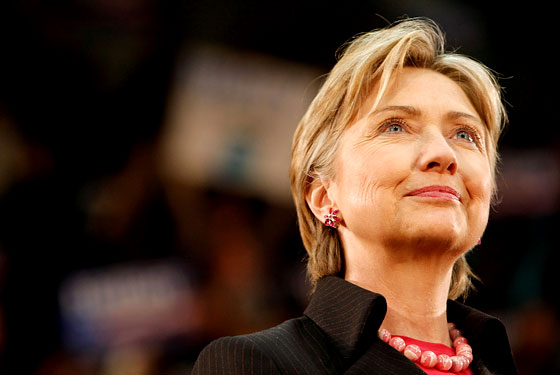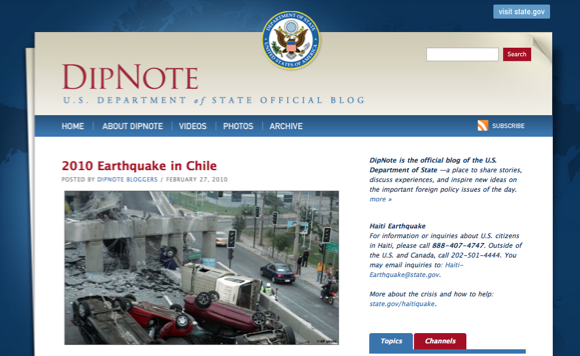Article courtesy of The Straits Times

Riding on the popularity of Web 2.0, United States Secretary of State Hilary Clinton is making waves as she redefines stolid diplomacy.
Under Mrs Clinton, the State Department has made headlines over the past year by using social media for promoting new missions and reaching out to a wider audience. Officers josh about who gets the larger Twitter following in the department which hosts perhaps the densest hub of dabblers in the new media in the Obama administration.
It was less than three years ago that the State of Department slowly began to shape its Web personality. The DipNote, the department’s official blog which keeps track of its latest activities, was set up under the Bush administration. But the website — which has attracted 12 million page views — has since grown, with new additions such as a YouTube channel, Twitter feed, Facebook page and Flickr photo account.

Curriculum is also being overhauled at the Foreign Service Institute to make sure that in two years, no public affairs officer is posted abroad without a grounding in new media.
With such an infrastructure in place, American diplomacy under Mrs Clinton has made a big leap towards Web 2.0. Her foreign policy mix usually contains interviews with the international media, webcasts for a foreign audience, a big speech or town hall meeting and then outreach through Facebook or SMS to make sure the message percolates.
Technology is especially animating the State Department’s development activities, which are the face of the American government in many countries.
In one example, the State Department was instrumental in setting up the simplest possible way for Americans to help Haitians just hours after the recent earthquake. It was as easy as testing “Haiti” to a number to donate US$10 to the Red Cross.
Months earlier, the same technique was used to get Americans to help the two million Pakistanis who fled their homes as the Taleban invaded the Swat Valley.
In Mexico, the State Department helped launch a mobile-based initiative to fight drug-related crime.
In Congo, e-mail and text messages are being used to warn women and children of rebel attacks. In sub-Saharan Africa, SMS is used to tell people how to take HIV medications.
The top U.S. diplomat is aided by a team of tech-savvy officers.
At the heart is Ms Anne-marie Slaughter, former dean of Princeton’s Woodrow Wilson School of Public and International Affairs. As the head of policy planning at the State of Department, she is charged with anticipating trends that will impact foreign policy.
Mrs Clinton’s senior adviser for innovation Alec Ross also typifies the new diplomat. The post was specially created for Mr Ross, who was the technology policy adviser to Barack Obama during his presidential campaign. He was the founder of OneEconomy.com, a non-governmental organization using technology to help the poor.
Twitter co-founder and chairman Jack Dorsey has remarked that he had never seen such government involvement in promoting technology globally.
The State Department has also harnessed the digital reach in more sensitive areas.
The US$5 million Civil Society Initiative 2.0 launched last November, for instance, aims to educate and train grassroots organizations around the world to create websites, blog, launch text messaging campaigns and build online communities.
Under Mrs Clinton, U.S. public diplomacy is much more sophisticated and modern, said Professor Phillip Seib, director of the Center for Public Diplomacy at the University of South California.
However, he was quick to add: “But it is still in the outer orbits of the State Department. I’m not sure if the priorities are well sorted out.”
The State Department, for instance, actively disseminated Mr Obama’s Cairo speech in which he laid out U.S. policy towards the Muslim world. But there has been no policy follow-through to support the hopes stirred by the promises in the speech.
Article written by Bhagyashree Garekar for The Straits Times